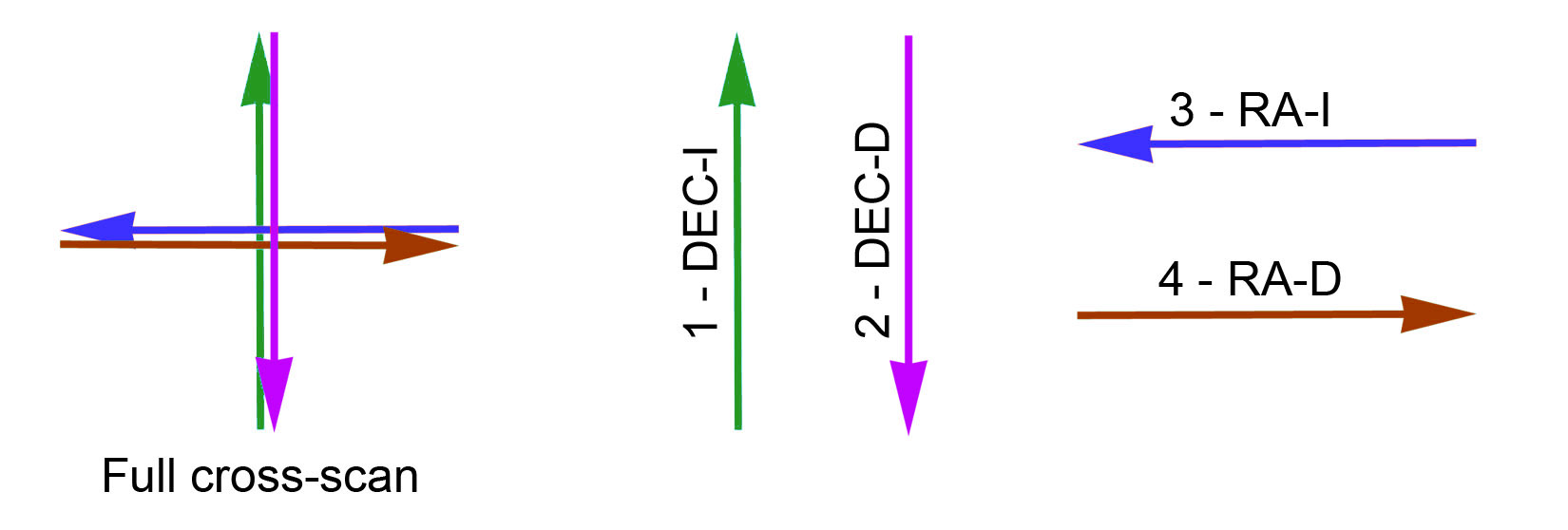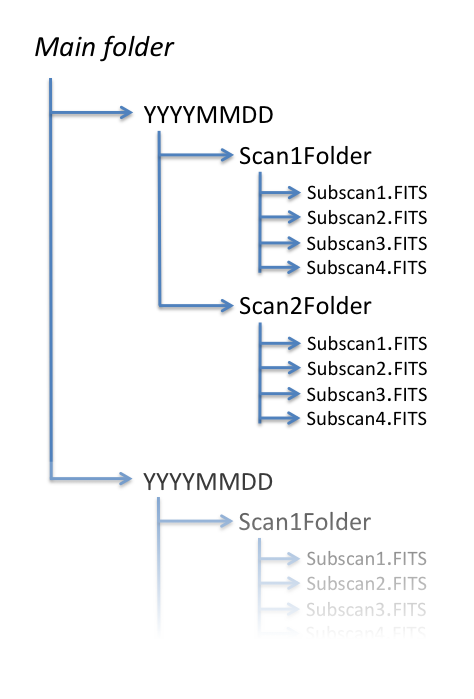-
Notifications
You must be signed in to change notification settings - Fork 0
1_Introduction
The Cross-scan Analysis Pipeline is a set of IDL-programming-language tools, conceived to organise, flag and reduce continuum cross-scans performed on point-like sources using the Italian dish antennas (with the DISCOS control software).
The package does not deal with spectroscopic data, and is also limited to the analysis of single feed data (the main/central feed is considered, in case of multi-feed acquisitions). It does not perform map-making: it is strictly devoted to cross-scans.
We define “scan” the cross-scan acquisition we want to use in order to obtain a single flux density measurement on a given source. The “quantum element” of a cross-scan acquisition is composed by 4 sub-scans, as depicted in the following scheme. DISCOS users can schedule scans containing more subscans, according to the needed integration time, thus the number of subscans can raise to 4*N inside a single scan.

The scan-subscan structure reflects on the generation of folders and files inside DISCOS. Such structure, illustrated below, is the one required by CAP as well.

| FWHM: | Full-Width Half-Maximum |
|---|---|
| HPBW: | Half-Power BeamWidth |
| OTF: | On-The-Fly acquisition. The antenna moves according to user-defined parameters, scanning the sky at constant speed. Data acquisition is active during the scan |
| Scan: | a full set of subscans composing the OTF cross-scan acquisition. The minimum number of subscans composing a scan is 4, if the schedule was written using the provided tools. Each scan corresponds to a folder, where subscans are the single FITS files |
| Section: | acquisition stream (aka “logical channel”), two for each feed (LCP and RCP) |
| Subscan: | each of the single element (segment) composing a cross-scan. Each subscan corresponds to a FITS file |
| TPB: | Total Power Backend |